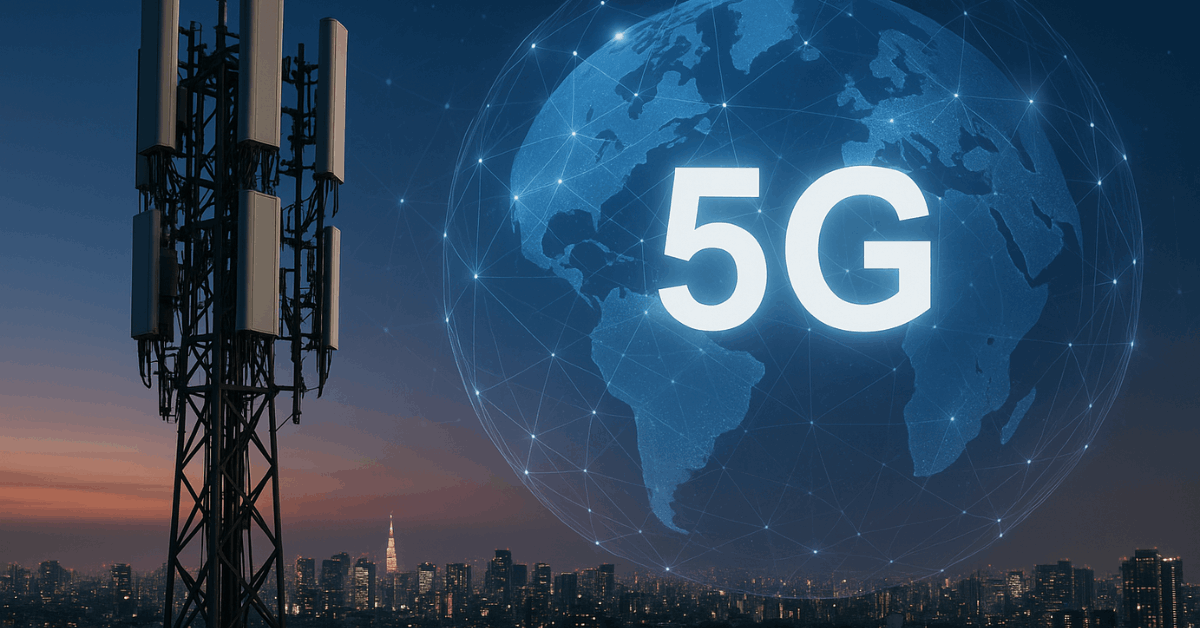How technology changes in the last decade is evident in how you live, work, and connect daily. Innovations in communication, health, and finance have reshaped everyday experiences.
This rapid shift created new industries and changed user expectations. Learning about these changes helps you adapt and make better decisions.
Communication and Connectivity
Technology has changed how people connect around the world. Communication is faster, more visual, and more interactive than ever.
5G Rollout and Global Impact
5G began rolling out globally around 2019. It offers faster data speeds, ultra-low latency, and stronger connectivity.
These improvements boosted streaming, mobile gaming, and real-time video calls. 5G also enabled growth in smart cities, autonomous vehicles, and IoT networks.

Rise of Messaging and Video Apps
Messaging apps like WhatsApp, Telegram, and Signal grew significantly. They replaced SMS and emails for both personal and work communication.
Video apps such as Zoom and Google Meet became standard tools, especially during the COVID-19 pandemic. They made remote work and online learning accessible to all.
Artificial Intelligence and Automation
AI has moved from tech labs into your daily routines. You use it when shopping online, asking questions, or unlocking your phone.
AI in Everyday Use
Smart assistants like Siri, Alexa, and Google Assistant use natural language processing to help you. Recommendation systems on Netflix or YouTube personalize your content.
AI tools also power image recognition and text-to-speech features. They simplify tasks and boost productivity.
Workplace and Service Automation
Automation now handles routine business tasks. AI chatbots help with customer service. Document scanners and data extractors reduce manual work. Companies save time and cut costs by using AI-powered software.
Mobile Devices and Personal Tech
Mobile tech changed fast between 2015 and 2025. Devices are smarter, faster, and more health-aware.
Smartphone Advancements
Modern smartphones have foldable displays and under-display fingerprint scanners. Camera systems now include multiple lenses with AI features.
Battery life and processing speeds have improved greatly. These upgrades support apps for productivity, entertainment, and communication.
Health Monitoring with Wearables
Smartwatches and fitness trackers now monitor heart rate, sleep, and blood oxygen. These devices sync with apps to analyze your health data.
Alerts can detect abnormal patterns. Wearables promote preventive care and healthier routines.
Social Media Trends
Social media changed how you consume news, trends, and content. It became shorter, faster, and algorithm-driven.
Video-First Content and Algorithms
Platforms like TikTok and Instagram Reels prioritize short-form video. AI algorithms personalize your feed and increase engagement.
This shift impacts how brands and influencers create content. Video content now dominates social strategies.
Fighting Misinformation
AI tools now filter out harmful content. Platforms partner with fact-checkers and display warnings on flagged posts.
Despite improvements, false content still spreads. Users are encouraged to verify before sharing.
Remote Work and Digital Learning
Work and school went digital due to global disruptions. This shift led to long-term changes in how people operate.
Work-from-Home Revolution
COVID-19 accelerated remote work adoption. Tools like Microsoft Teams, Slack, and Zoom became vital.
Companies built hybrid work models. Flexibility became a standard expectation for many employees.
Online Education Tools
Google Classroom, Coursera, and Khan Academy helped students learn remotely. Virtual classrooms offered real-time lectures and interactive assignments.
These platforms continue to support flexible and affordable education. EdTech became essential for all age groups.
Cloud Computing and Online Services
More services now live in the cloud. This shift gave users better access, flexibility, and data protection.
Cloud Adoption in Businesses
Companies moved from physical servers to cloud platforms. Major providers include AWS, Google Cloud, and Microsoft Azure.
Cloud services support backups, software hosting, and data analytics. This helped businesses cut costs and improve scalability.
Everyday Cloud Usage
You use cloud services when saving files to Google Drive or Dropbox. Photo backups, video streaming, and document collaboration happen in the cloud.
Files are accessible anytime, from any device. This convenience made cloud a default standard.
Cybersecurity and Data Privacy
As digital activity grew, so did cyber threats. Users became more aware of online safety.
Increased Cyber Threats
Ransomware attacks, phishing scams, and identity theft increased. High-profile breaches affected companies and governments.
Security measures had to improve. Users now demand better protection for personal data.
Better Security Practices
Two-factor authentication (2FA) became common. Apps use encryption to secure chats and transactions.
Companies train employees to avoid phishing attempts. Privacy settings became easier to control on most platforms.
Smart Transportation and Mobility
Vehicles became smarter and cleaner. Transportation benefited from new tech and data.
Electric Vehicle Expansion
EVs saw major adoption thanks to Tesla, BYD, and traditional automakers. Batteries became cheaper and more efficient.
Charging infrastructure expanded across cities. Governments offered incentives to encourage EV purchases.
Autonomous Driving Tests
Companies like Waymo and Tesla tested self-driving features. Some cities launched autonomous shuttle trials. Safety and regulation concerns limited rollout. Full autonomy is still in progress.
Internet of Things (IoT) at Home
More devices in your home now connect to the internet. These devices automate and secure your living space.
Growth in Smart Devices
Smart thermostats, lights, locks, and speakers are common. They respond to voice commands and app controls.
Automation routines help save energy. Smart homes offer convenience and customization.
Privacy in Smart Homes
Smart devices collect voice and usage data. Users became more privacy-conscious. Settings now allow data control and mute options. Manufacturers focus on building trust with users.
E-Commerce and Digital Payments
Shopping became faster and easier without physical stores. Payments went digital too.

Surge in Online Shopping
People turned to Amazon, Shopee, and Lazada for everyday needs. Businesses created digital storefronts and mobile apps.
Customers expect fast delivery and simple checkout. Online sales surpassed in-store shopping in many sectors.
Mobile Wallet Adoption
Apps like Apple Pay, Google Pay, GCash, and PayMaya grew rapidly. QR codes enabled contactless transactions. Peer-to-peer transfers became instant. Cash usage declined in many urban areas.
Blockchain, Cryptocurrency, and NFTs
New technologies challenged traditional finance and ownership. They opened up digital investment and creation.
Bitcoin and Ethereum Popularity
Bitcoin saw major price surges and dips. Ethereum powered decentralized apps and tokens. Users invested through exchanges and apps. Crypto became a hot but volatile asset.
NFTs and Digital Ownership
NFTs gave artists new ways to sell digital art. Buyers owned unique items like images, videos, or music.
The market peaked around 2021. Critics raised concerns about value and environmental impact.
Healthcare Technology Improvements
Healthcare became more digital and efficient. Tech enabled better diagnosis, treatment, and access.
Virtual Care and Telemedicine
Online consultations replaced clinic visits during the pandemic. Apps let patients book, consult, and receive prescriptions remotely.
Wearables and digital records supported continuous monitoring. Virtual care saved time and improved convenience.
Vaccine Development and mRNA Tech
COVID-19 led to fast vaccine development. Pfizer and Moderna used mRNA to speed up production.
mRNA also shows promise for cancer treatment and other diseases. This changed how researchers develop future vaccines.
Tech for a Sustainable World
Green technology helped fight climate change. Companies and users adopted cleaner options.
Innovations in Renewable Tech
Solar panels, wind farms, and energy storage improved. Smart grids balance energy usage. AI helps manage energy supply and demand. Clean tech reduced emissions in key sectors.
Electronic Waste and Recycling
E-waste from phones and gadgets increased. Companies offer trade-in and recycling programs.
Consumers look for repairable and longer-lasting devices. Sustainable design became a key selling point.
Looking Ahead: What the Next Decade Could Bring
The pace of tech innovation shows no signs of slowing down. Artificial general intelligence, quantum computing, and extended reality (XR) are advancing.
Personalized medicine, smart cities, and space tech may soon be everyday tools. Preparing for this change helps you stay ahead.
The Last 10 Years in Review: A Shift You Can’t Ignore
How technology changes in the last decade is clear in areas like work, communication, and health. Between 2015 and 2025, digital tools like AI, mobile apps, and cloud platforms became standard.
These innovations reshaped your routines and expectations. Recognizing these shifts helps you move forward with confidence.



